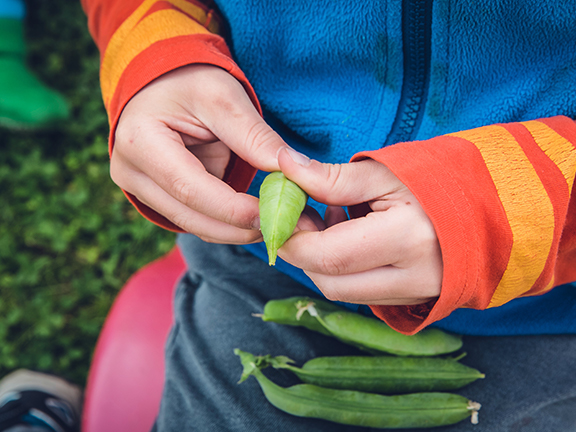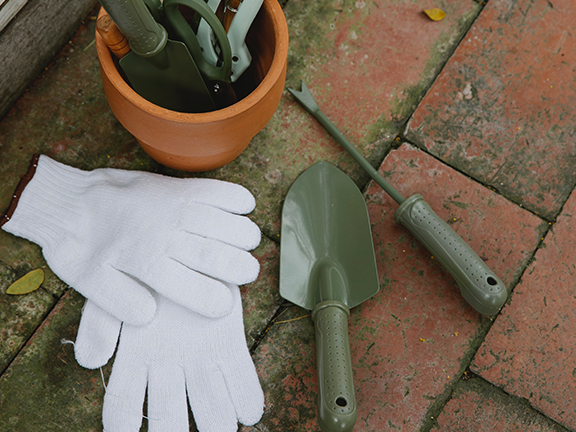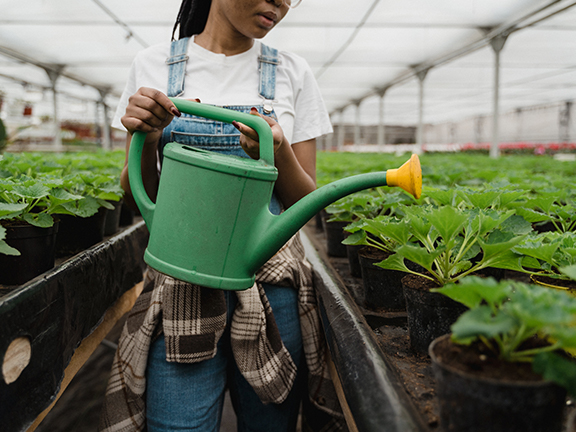Garden in a Glove
About the Activity
Learn about conservation by creating your own garden.
Conservation is the use of Earth’s natural resources — such as water, soil, air, minerals, wildlife — while protecting their ecosystems at the same time. In this activity, kids will learn more about conservation by creating their own ecosystem. By the end, they will have their very own garden.

Materials
These simple supplies are all you’ll need to create your own garden in a glove. You may need to make a trip to a plant or hardware store for the seeds:
Plastic / rubber glove
Cotton balls
5 different types of seeds (tomatoes, beans, and sunflower seeds are a few examples)
Permanent marker
Spray bottle with water
Activity Steps
In this activity, we will grow our own garden in a glove. Be sure to pay special attention to the elements of the ecosystem that will help your seeds flourish.
First, take your glove and use a permanent marker to write the name of each seed on a finger of the glove.

 Did you know?
Did you know?An ecosystem is a community or group of organisms that live in and interact with each other in a specific environment. All creatures rely on balanced ecosystems, where they interact with pieces of their environment — such as soil, air, and water — to create a cycle of life.
Now, wrap each seed inside of a cotton ball. And then place the cotton ball in the corresponding finger of the glove.
 Did you know?
Did you know?Sometimes natural disasters, or even human interference, can disrupt an ecosystem. Ecosystem disruption could lead to disastrous consequences for the environment and the organisms that live there. This is why pollination is so important. Even when certain factors get in the way of our environment, other factors — such as animals, birds, or even wind — may help to transfer pollen from one flower to another, allowing plantlife to reproduce.
Next, take your bottle and lightly spray water inside of the glove so that each seed receives water. Spray just enough water to make the cotton ball moist. Too much water could drown or rot the seed.
 Did you know?
Did you know?When pollen transfers from the male parts of one flower to female parts of another, it fertilizes the flower, allowing seed production to occur.
Place your glove in the window near sunlight, and continue to water your seeds daily and track how they grow. Your glove now serves as an ecosystem for your plants. By days 3-5 your seeds should start to sprout, and by days 9-14 the seeds should be able to be transferred to a small container with soil.
 Did you know?
Did you know?There are two types of pollination: abiotic and biotic. Abiotic pollination is the result of environmental factors, such as air, wind, and rain, distributing pollen from one type of organism to another. Biotic pollination is when live pollinators, such as insects and animals, transfer pollen from one flower to another. Live pollinators can include bees, ladybugs, butterflies, bats, or hummingbirds. A live pollinator may even be a person who carries pollen and seeds on their shoes and clothes.
Test Your Knowledge
See how much you learned about pollination and ecosystems.
Reflection Questions
Questions for your kids and teens.
Which natural resources will help the seeds in your garden grow?
How could pollination help your garden?
How can you protect your garden from disruptions?
Investigate and Explore

Take what you’ve learned to the next level to learn more and explore the possibilities.
Pollination is happening around us every day. Take a walk outside or visit a nature preserve near your home. Observe the plants and animals around you. What do you see, hear, and feel? Look for signs of both biotic pollination and abiotic pollination in the environment. Maybe you see ladybugs or hummingbirds. Or maybe you can feel a breeze as you observe the wind blowing through the trees and flowers. The next time you are outside with a friend, share all the different examples of pollination around you.




